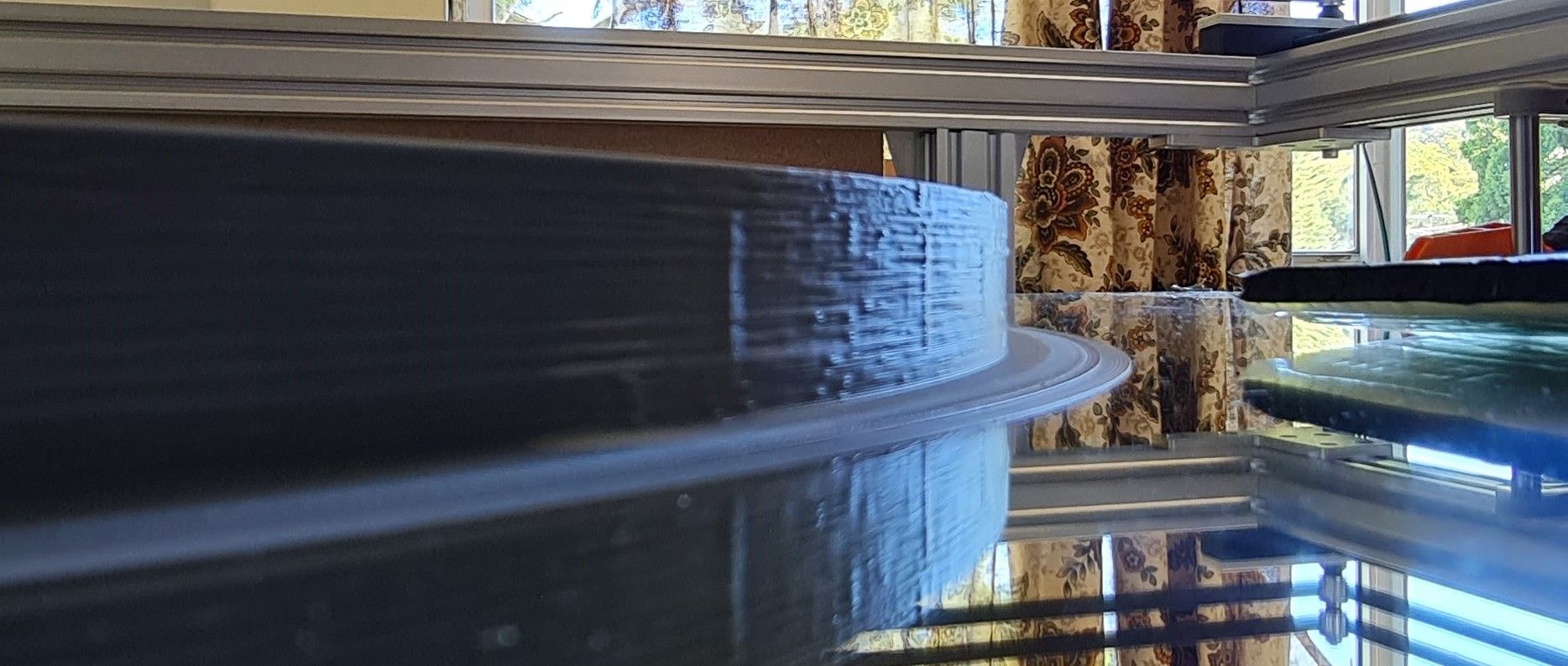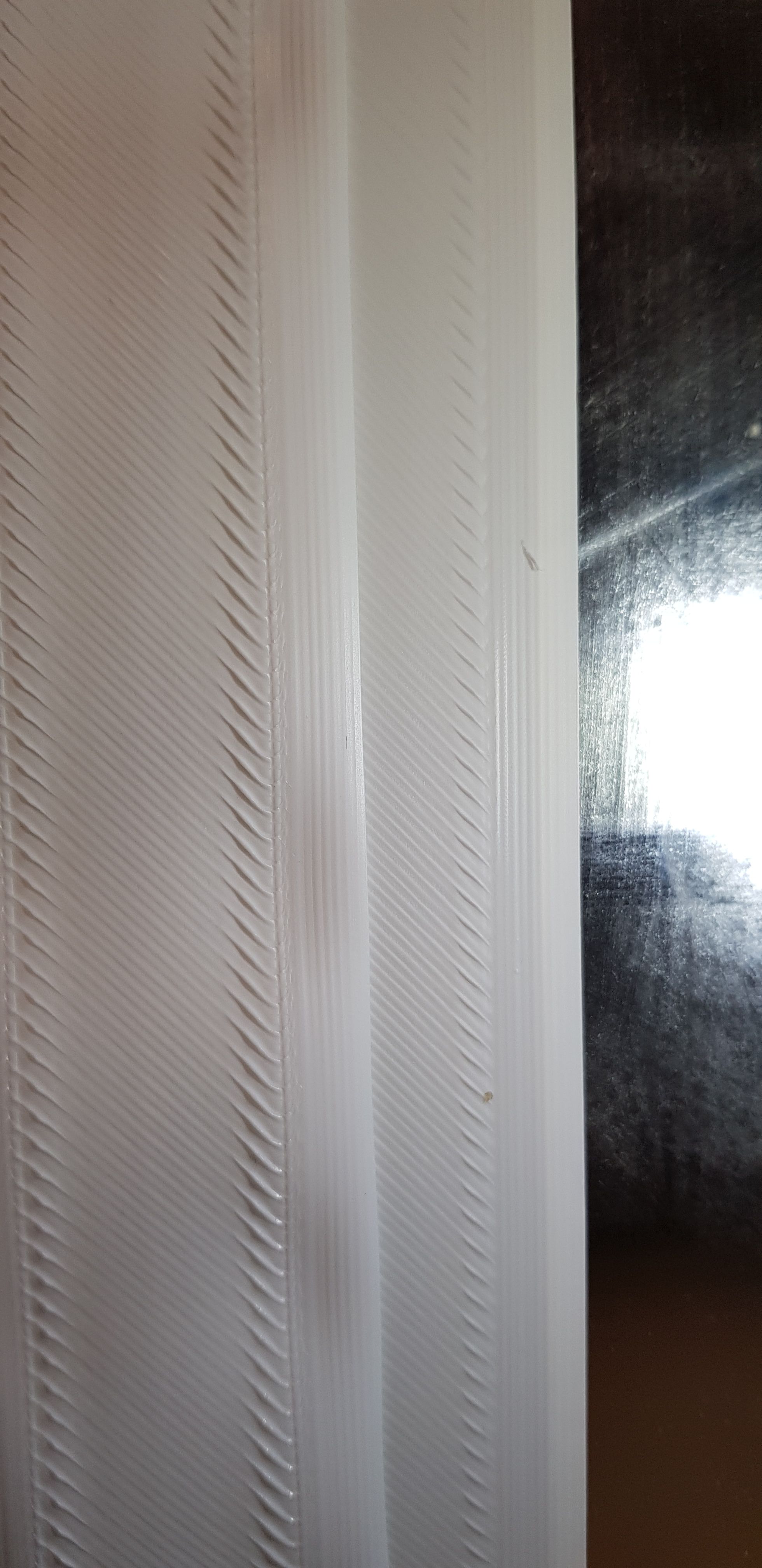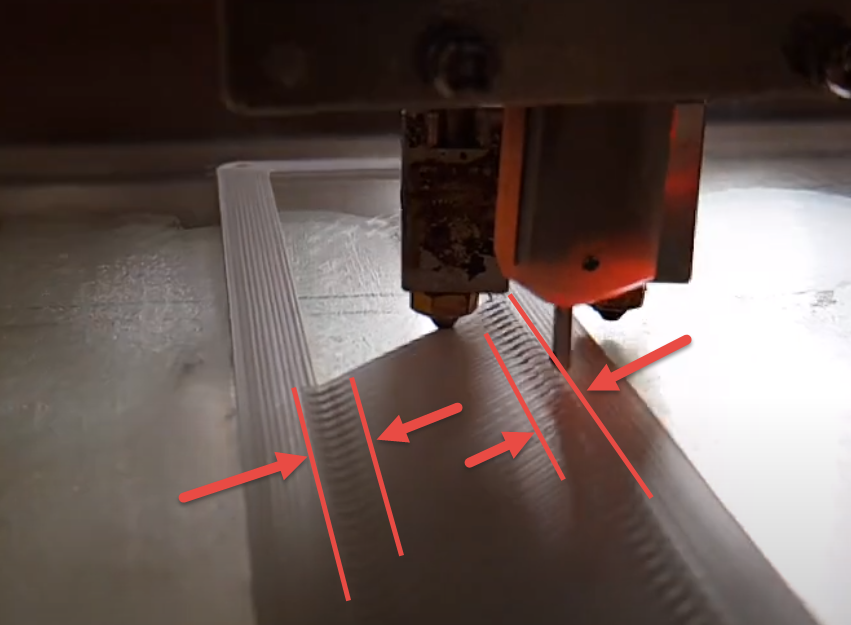@Marshal - Its hard to say if your problem is the same. I blame my issue on the slicer. I only have very simple start code - no M32 commands.
M122 output below:
M122: === Diagnostics ===
RepRapFirmware for Duet 2 WiFi/Ethernet version 2.05 running on Duet WiFi 1.02 or later + DueX5
Board ID: 08DJM-9178L-L2MSD-6JKD6-3S86K-19D2N
Used output buffers: 1 of 24 (14 max)
=== RTOS ===
Static ram: 25712
Dynamic ram: 94484 of which 0 recycled
Exception stack ram used: 520
Never used ram: 10356
Tasks: NETWORK(ready,596) HEAT(blocked,1232) DUEX(suspended,160) MAIN(running,1664) IDLE(ready,160)
Owned mutexes:
=== Platform ===
Last reset 78:43:40 ago, cause: power up
Last software reset at 2021-05-20 18:12, reason: User, spinning module GCodes, available RAM 10404 bytes (slot 2)
Software reset code 0x0003 HFSR 0x00000000 CFSR 0x00000000 ICSR 0x0441f000 BFAR 0xe000ed38 SP 0xffffffff Task 0x4e49414d
Error status: 0
Free file entries: 9
SD card 0 detected, interface speed: 20.0MBytes/sec
SD card longest block write time: 211.0ms, max retries 0
MCU temperature: min 25.4, current 31.8, max 36.5
Supply voltage: min 11.4, current 11.7, max 12.4, under voltage events: 0, over voltage events: 0, power good: yes
Driver 0: ok, SG min/max 0/664
Driver 1: ok, SG min/max 0/880
Driver 2: standstill, SG min/max not available
Driver 3: standstill, SG min/max not available
Driver 4: standstill, SG min/max 0/1023
Driver 5: standstill, SG min/max 0/418
Driver 6: standstill, SG min/max 0/500
Driver 7: standstill, SG min/max 0/387
Driver 8: standstill, SG min/max 0/494
Driver 9: standstill, SG min/max not available
Date/time: 2021-05-24 19:55:28
Cache data hit count 4294967295
Slowest loop: 628.52ms; fastest: 0.07ms
I2C nak errors 0, send timeouts 0, receive timeouts 0, finishTimeouts 0, resets 0
=== Move ===
Hiccups: 0, FreeDm: 158, MinFreeDm: 97, MaxWait: 1487703ms
Bed compensation in use: mesh, comp offset 0.000
=== DDARing ===
Scheduled moves: 1909091, completed moves: 1909075, StepErrors: 0, LaErrors: 1454, Underruns: 0, 3
=== Heat ===
Bed heaters = 0 -1 -1 -1, chamberHeaters = -1 -1
Heater 0 is on, I-accum = 0.4
Heater 1 is on, I-accum = 0.3
=== GCodes ===
Segments left: 1
Stack records: 2 allocated, 0 in use
Movement lock held by null
http is idle in state(s) 0
telnet is idle in state(s) 0
file is doing "G1 F6000 X387.506 Y471.215 E1.89808" in state(s) 0
serial is idle in state(s) 0
aux is idle in state(s) 0
daemon is idle in state(s) 0
queue is idle in state(s) 0
autopause is idle in state(s) 0
Code queue is empty.
=== Network ===
Slowest loop: 204.40ms; fastest: 0.00ms
Responder states: HTTP(0) HTTP(0) HTTP(0) HTTP(0) FTP(0) Telnet(0) Telnet(0)
HTTP sessions: 1 of 8
- WiFi -
Network state is running
WiFi module is connected to access point
Failed messages: pending 0, notready 0, noresp 0
WiFi firmware version 1.21
WiFi MAC address cc:50:e3:e3:b1:11
WiFi Vcc 3.28, reset reason Turned on by main processor
WiFi flash size 4194304, free heap 16232
WiFi IP address 192.168.0.112
WiFi signal strength -55dBm, reconnections 0, sleep mode modem
Socket states: 0 0 0 0 0 0 0 0
=== Filament sensors ===
Extruder 0: pos 0.84, errs: frame 187 parity 4 ovrun 71 pol 348 ovdue 0







